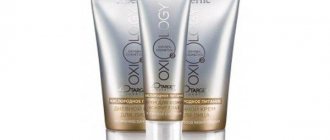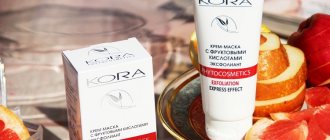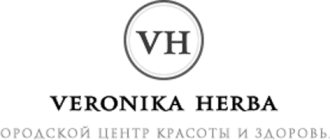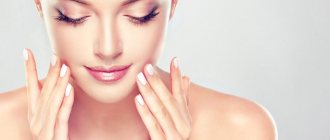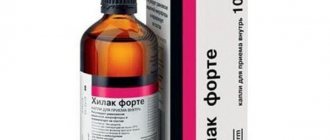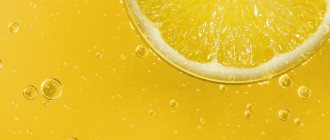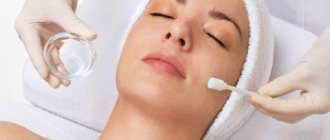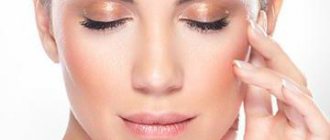Chemical peeling is the most popular procedure in beauty salons and clinics around the world.
This popularity is well deserved, because chemical peeling can solve a variety of problems: both the problems of young, acne-prone skin, and the problems of mature skin with signs of aging.
- What is peeling
- How chemical peeling works
- Peeling depth
- Peeling effects
- How does the peeling procedure work?
- Peels with fruit acids (AHA)
- At what age and how often can superficial peeling be done?
- Preparing for peeling
- Recovery period
- Main contraindications to peeling
- Chemical peeling at home
- Cost and season of peelings
What is peeling
Peeling (from the English to peel) is the exfoliation of the upper stratum corneum of the skin, as a result of which dead cells are removed, the skin is renewed and thus improves its appearance. With chemical peels, exfoliation occurs using various acids.
Fruit acid peeling is not a newfangled procedure. Even the ancient Egyptians and Greeks used various acids, juices of berries and fruits to rejuvenate the skin:
- sugar cane juice - that is, glycolic acid,
- wine sediment - that is, tartaric acid,
- sour milk - that is, lactic acid.
And our mothers and grandmothers made themselves masks from strawberries or yogurt to improve their complexion.
Today, peelings with fruit acids, or they are also called peelings with alpha hydroxy acids (or AHA ) are the most popular types of peelings, as they combine high efficiency, safety and affordable cost of the procedure.
I won’t hide it – peeling is one of my favorite salon procedures.
I actively use peelings both at work and to maintain the good appearance of my own skin, since I am not a supporter of injections or any new, not time-tested hardware techniques.
How does it work
In fact, the active substances for the procedure are alpha hydroxy acids (AHAs), when applied abundantly to the epidermis, microdamages appear. They are not harmful to the body, except for slight redness or peeling afterwards. But deliberately burning tissue during chemical peeling makes sense - restorative mechanisms are activated, tissues are renewed naturally. The framework fibers and glycosaminoglycans of the dermis are re-formed, that is, changes occur deep inside, and the result is reflected outside.
How chemical peeling works
A chemical peel is essentially a chemical burn to the skin. But the depth of this burn is strictly controlled by a cosmetologist.
The principle of chemical peeling is that in response to a burn, restoration processes are launched in our skin and thus it is possible to achieve skin rejuvenation and eliminate some problems.
After peeling, active cell division begins in the skin and renewal of the epidermis is accelerated, resulting in an improved appearance of the skin - evens out color and texture.
In addition, acids perfectly cleanse the ducts of the sebaceous glands, reduce oily skin and reduce the formation of comedones and pimples. They also stimulate skin fibroblasts, which increases collagen synthesis and improves skin elasticity and firmness.
Acids and their concentration
For comprehensive care, combinations of several acids are used, so the product covers several directions at the same time. It is taken into account that epidermal cells get used to some acids in everyday life: glycolic, lactic. To them is added one that will make a breakthrough, activate and accelerate metabolic processes.
Lemon
It is an antibacterial agent, destroys harmful microorganisms on the surface of the skin, and moderately whitens it. Used diluted. In addition to lemon and lime, it is found in other citrus fruits, kiwi.
Glycolic
The substance HOOC-CH₂-OH is responsible for pigmentation, returning an even tone and correct structure. The pores narrow, pigment spots gradually disappear. Its sources are sugar cane and beets, unripe grapes.
Apple
In biology - hydroxysuccinic acid. Stimulates metabolic processes, causes cells to renew themselves at a rapid pace. In addition to apples, it is produced from rowan, barberry, and raspberries. Unripe fruits and berries are especially rich in the component.
Dairy
The second name is lactate. It is a fermentation product, therefore it is found in fermented milk drinks (kefir, yogurt), and blueberries. The size of the molecule allows it to easily pass through cell membranes, and deep hydration occurs. As a result, the surface softens and becomes more delicate.
Wine
It is a dibasic hydroxy acid, the main enemy of keratinized cells, exfoliates, removes old particles of the integument. Whitens, moisturizes. Based on the name, it is found in wine and grapes. It is also extracted from oranges and the sour juices of other fruits.
A standard set of components will improve the health of the epidermis, the proportions vary depending on the goal.
Peeling depth
Based on the depth of impact, peelings are divided into:
- Superficial - affects only the uppermost stratum corneum of the epidermis
- Median - affects the middle layers of the epidermis
- Deep - affects all layers of the epidermis down to the papillary layer of the dermis
Superficial peels are the most popular. After such peelings, there are practically no complications and there is no need to sit at home for one or two weeks, waiting for redness, swelling or severe peeling to go away.
Peeling effects
What effects can be expected after a superficial chemical peeling procedure:
- Immediately after peeling, complexion improves and skin becomes smoother
- Fine wrinkles are smoothed out and the appearance of deep wrinkles is reduced
- Pigment spots lighten
- Increases skin hydration and elasticity
- It also improves the course of acne - the number of rashes decreases and the pores tighten slightly.
However, superficial peeling is not a magic cure, so it cannot:
- Smooth out deep wrinkles
- Eliminate age-related sagging skin
- Erase all pimples, scars and age spots from your face
You need to understand this and not place unjustified hopes on superficial peeling.
Contraindications
Despite a number of advantages and ease of implementation, fruit facial peeling has contraindications: this is what will force you to postpone or cancel the procedure.
- Allergy to the chemical composition of the product: before the session, it is recommended to do a test on the inside of the arm and look at the reaction;
- With skin prone to scarring or hypersensitivity, it is better to avoid visiting a beauty clinic;
- During lactation, it is better to postpone the visit; stress or strong odors can also harm a pregnant woman;
- Inflammatory processes, rashes, ulcers, acne, boils - another taboo.
- In case of relapse of chronic diseases such as herpes and their exacerbation, it is advisable to wait until complete recovery;
- People with blood diseases (hemophilia) and autoimmune diseases are strictly prohibited from undergoing the procedure.
- Relative contraindications include mechanical damage to the skin, abrasions, and scratches. During colds, acute respiratory viral infections or due to viral infections, the session is postponed;
- During menstruation, hormonal imbalances, a feeling of general malaise, weakness - it is better not to take risks, otherwise the body's reaction to discomfort will be unpredictable.
If you follow the rules and adhere to the recommendations, multi-fruit cleansing will bring joy and the desired effect.
Note! If the superficial method is suitable for beginners to carry out at home, then for more serious manipulations you should contact a professional. A good specialist will determine your skin type, its condition, and identify the main problems. The result will depend on the correct direction and concentration of the components.
How does the peeling procedure work?
The superficial peeling procedure with fruit acids usually takes about 30 minutes and consists of several stages:
- First, the cosmetologist thoroughly cleanses the skin and prepares it for peeling using special products.
- Then a thin layer of acid is applied to the face, usually in the form of a gel, and left on the skin for an average of 2 to 10 minutes. At this time, as a rule, a slight tingling or slight burning sensation is felt.
- After this, if necessary, a neutralizer is applied to the skin for 2-3 minutes, which stops the peeling.
- Then everything is washed off and post-peeling cream is applied.
Healing period
Excess mask is removed with massaging movements. When the components of the slurry dry, slightly moisten the top layer with water.
Immediately after washing off the mask with cold water, apply a moisturizing or nourishing cream to the skin to soothe it. You can also try rinsing your face with a decoction of chamomile or sage for these purposes.
Some cosmetologists recommend washing your face with warm water. After rinsing, the face should be treated with ice cubes prepared with chamomile.
To restore the dermis after cleansing sessions you will need:
- Regularly moisturize your skin with thermal water.
- Nourish the dermis and promote its regeneration. For these purposes, it is recommended to use Bepanten, Panthenol and Solcoseryl cream.
- Activate UV protection. Apply special protective creams, do not visit the solarium and the beach for several weeks.
Peels with fruit acids (AHA)
The most popular among peels with fruit acids are perhaps almond, glycolic and milk peels.
Almond peeling
is the most gentle, so it can be used even for very sensitive skin and skin with rosacea. Almond peeling is also widely used to improve the condition of problem skin.
Glycolic peeling –
The most popular peeling, it can be used to solve various problems. But it is especially effective for preventing aging and correcting age-related changes.
Milk peeling
It has good moisturizing properties, so it is often used for dehydrated and aging skin.
Other fruit acids are also used in cosmetology - tartaric, malic, citric. As well as combined peelings, which include several different acids at once.
When choosing a peel, you need to take into account the problems you want to work on, your age, the current condition of your skin, and many other factors. Therefore, in this matter, it is still better to consult with a cosmetologist who will carry out the procedure.
Popular means
A consultation with a cosmetologist or cosmetics seller will allow you to choose medications for independent use. Information about each of them will indicate the differences and determine the one you need.
- Janssen Inspira MFA from the German brand Janssen Cosmeceutical comes in classic white packaging. The manufacturer additionally offers a care kit. The biocomplex of fruit acids is a good basis for moisturizing and working with relief;
- Skinlite (South Korea) is often used at home: the delicate effect prevents irritation, while softening the epidermis, the face becomes softer and fresher;
- “Bark” cream mask contains AHA acids, allantoin, and D-panthenol. Oily shine is eliminated and pores are narrowed. Sold in a pharmacy. A standard 100 ml package lasts for about a year. Attention, the product cannot be used during pregnancy; those with sensitive skin should apply the mask carefully;
- Meishoku Detclear bright & peel aha & bha fruits uses a Japanese formula to combat dry skin without the risk of burning.
At what age and how often can superficial peeling be done?
Peeling can be done starting in adolescence and throughout life.
It’s just that at a young age, peeling is usually used to improve the condition of problem skin, and in adulthood – to prevent and correct signs of aging.
In some salons, you may be immediately offered to undergo a standard course - 6-10 procedures with an interval of once every 7-14 days. But many experts consider such a template approach to be wrong, and I completely agree with this.
It is very important to take into account not only the problems that you want to solve, but also the capabilities of the person himself - someone can afford to take an intensive course, while for others it is more convenient to do peeling once a month.
Therefore, there cannot be clear universal recommendations on this issue. But I will try to give you some guidelines so that if something happens, unnecessary procedures are not imposed on you in the salon.
First of all, you need to know that for the prevention of aging and salon care for problem skin, peeling can be used not only as a course, but also as a one-time procedure.
For people under 25 years of age with problem skin, peeling can be done either as a course or once every 1-2 months to reduce rashes, oily skin and other manifestations of acne.
In the age group of 25-30 years, skin reserves can be activated in one procedure. At this age, 2-3 peels per year are enough to prevent aging and smooth out fine expression wrinkles.
At the age of 30-45 years, to prevent and correct signs of aging, you can do a short course of 3-5 procedures, and then carry out maintenance procedures once every 4-6 weeks.
If this is not possible, then as an option, in the autumn-winter period you can do peeling once a month or even once every 2 months in combination with other rejuvenating procedures, for example, massage.
However, if you need to solve a specific problem, for example, to lighten age spots, or when there are pronounced age-related changes, then, of course, it will be more effective to undergo a course of peelings, 6-10 procedures every 7-14 days.
And at the age of 45-60 years, superficial peels are usually used in a short course of 3-4 procedures as preparation for medium peels.
But if at the age of 20-30 you have smooth, healthy skin without problems and signs of aging, you don’t need peeling at all yet.
Indications for the procedure
Peeling is indicated at any age if you have the following problems:
- peeling of the skin;
- greasy shine;
- blackheads and acne;
- uneven skin color;
- laxity of the dermis;
- small facial wrinkles;
- loss of contour clarity;
- dull color;
- formation of scars and grooves;
- hyperkeratosis or excessively rough skin;
- dark spots.
Fruit acids have an excellent effect on both teenage skin and the dermis with obvious age-related changes. The only thing is that you need to choose the right acid, taking into account the problems that you are going to safely eliminate.
Attention! If you have oily skin, it is recommended to cleanse it twice a week with fruit acids. For normal to dry skin, one application for 7 days is sufficient.
It is believed that skin cleansing with fruit peeling should be done in autumn or winter. In summer, such procedures are not carried out, because burning the skin with acid and exposure to the sun's rays can lead to the opposite effect - rapid aging, the formation of freckles and age spots.
Preparing for peeling
Preparation for peeling first of all consists in avoiding prolonged exposure to the sun and visiting a solarium for 2 weeks before the procedure.
If possible, pre-peel preparation can be carried out within 2 weeks before peeling. It consists of using a wash gel, lotion or cream with acids in home care, which can be purchased from a cosmetologist.
Pre-peeling preparation smoothes the stratum corneum, prepares the skin for the procedure and improves the peeling effect. However, such preparation can be replaced by 1-2 peeling procedures with a low concentration of mandelic or glycolic acid.
Recovery period
After peeling, you must use sunscreen with SPF 30, even if the weather is cloudy outside, and also do not plan trips to the sea or visiting a solarium for at least the next 2-3 weeks.
Chemical peeling at home
Is it possible to do chemical peeling at home? Yes, of course you can. And now peelings with fruit acids are sold for independent home use.
However, you need to understand that according to the law, the concentration of fruit acids in peels for independent home use cannot exceed 10%. Usually it is 5-7%
Cosmetologists work with peelings in which the concentration of fruit acids is 30-50-70%. And the higher the concentration of the drug, the correspondingly higher the effectiveness of chemical peeling.
Therefore, of course, it is naive to expect from a home peel with 5% glycolic acid the same effect as from a salon procedure with 50% glycolic acid.


